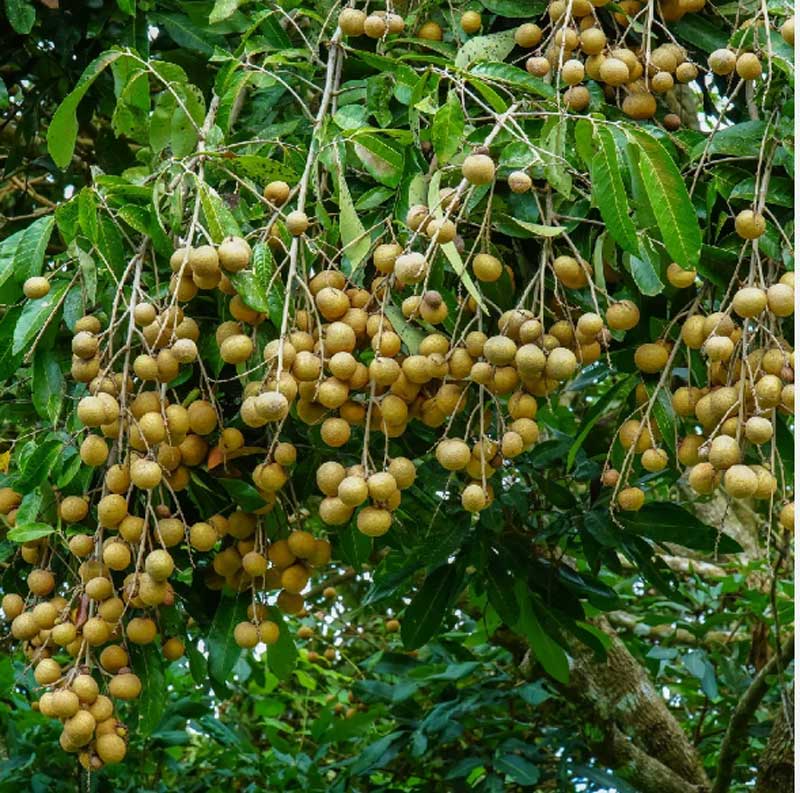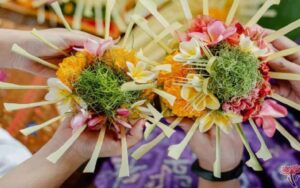SACRED FLOWERS: A Glimpse on Importance of Flowers in Divinity
Neelima, P., Sravanthi, D., Pavani,
T., Ramesh, R., Deepak Reddy,
B., Gopala Krishna Murthy, and
Hemantha Kumar., J. Agricultural College,
Aswaraopet, PJTSAU,
Hyderabad, Telangana
“Flowers please the mind and grant prosperity. Hence, men with righteous deeds bestowed the name Sumana on them.”
-The Mahabharata book 13, Anusasana Parva Chapter 101, verses 19-21
Flowers have forever been associated with the Creator, religion, worship and with innumerable myths. Flowers have a significant role to play in our daily lives from birth to death. In India a sizable percentage of flowers produced are used for the devotional offerings. In India, the very name of worship ritual called ‘pooja’ can be translated as the “floral act”. It is stated as a ritual in the vedic scriptures, that offering certain flowers to some specific gods showers prosperity and bliss all glories to the Indian mythology. Several fragrant flowers used for the worship of Gods. People believe that different flowers could be used to propitiate different Gods. No Hindu worship is complete without offering flowers. The most common flowers they used for worship were: Lotus, Nymphea, Jasmine, Caluophyllum, Hibiscus (Mandar), Kadamba, Coral Jasmine, Bakul etc.
Lotus
Scientific name: Nelumbo nucifera,
Hindi name: Kamala, Padma, Saroja
Sanskrit name: Padma, Kamala, Abja, Saroja
Family: Nelumbonaceae
Lotus is the National flower of India and likewise, there is a lot of mythological significance and links to flowers with Indian Gods and Goddesses. The world’s most beautiful flower is also the most sacred, and it seems there never was a time when Hindus did not adore the lotus. From ancient times the lotus has been a divine symbol in Hindu tradition. In various regions of India, Lotus flowers are used in all temples. Lotus is associated with the gods Vishnu, Brahma, and the goddesses Lakshmi and Sarasvati. It is often used as an example of divine beauty. It is believed that Lord Brahma, the Creator of this Universe, was born on the lotus which sprung from Lord Vishnu’s naval. The (red) lotus has pride of place in Indian literature. The goddess Lakshmi sits on a red Lotus, and Sarasvati, on a white one. The lotus has esoteric and sacred significance in spirituality. The Mother Goddess (Devi) is called Kamalamba or “Lotus Mother: she resides in a thousand-petalled lotus said to be located in the Sahasrara Chakra in the head. For Buddhists, lotus symbolizes divinity, fertility, wealth, knowledge and enlightenment. The lotus blooms at day and closes at night: so the sun is referred to as the “Friend of the Lotus”. Lotus is the main offering to Surya, the Sun god.

Blue Waterlily
Scientific name: Nymphaea nouchali/stellata
Hindi name: Neel Kamal
Sanskrit name: Krishna Kamalam
Family: Nymphaeaceae
The dark complexion of Krishna is compared to that of Neelkamal. For this reason, the Blue Waterlily is also called Krishna Kamal. There is a mythological story related to nympheae in Ramayan i.e., Rama went to ‘Lanka’ to rescue his abducted wife, Sita, from the grip of Ravana, the king of the Demons in Lanka. Before starting for his battle with Ravana, Rama wanted the blessings of Devi Durga. He came to know that the Goddess would be pleased only if she is worshipped with one hundred ‘NeelKamal’ or blue lotuses. Rama, after travelling the whole world, could gather only ninety nine of them. He finally decided to offer one of his eyes, which resembled blue lotuses. Durga, being pleased with the devotion of Rama, appeared before him and blessed him.
Jasmine
Scientific name: Jasminemultiflorum/pubescens, J. auriculatum and J.grandiflorum
Jasmine is used as religious offerings symbolizing divine hope. They are held sacred to be especially sacred to Vishnu and are used as devotive offerings in religious ceremonies. Further, it is used to woship Lord Hanuma and offering jasmine oil along sindoor believed to ward off evil effects in human life.
Sulthan Champa
Scientific name: Calophyllum inophyllum
Hindi name: Sultan Champa
Sanskrit name: Nag champa
Family: Calophyllaceae
A fragrant flower, it adorns the hair of Goddess Lalitambika. This flower is used in worship of Lord Vishnu. The glory of this flower is found in Lalita Sahasranama and is considered auspicious to offer Ganesha.
China Rose
Scientific name: Hibiscus rosa-sinensis L.
Hindiname: Javakusum, Jasud, Juva, Gudhal
Sanskritname: Japa, Javakusum
Family: Malvaceae
The offering of Hibiscus flowers is mandatorily made before goddess Kali, Durga, Chamundi, Lord Shiva and it is a favorite flower of lord Ganesha. Goddess Kali is adorned with 108 hibiscus flowers garland around her neck during Kali Puja. The glory of the rising sun is often compared to this resplendently beautiful flower. A famous couplet in praise of the Sun God begins ‘japaakusumasankaasam’. The glowing complexion of the orange-skinned Hanuman is also compared to this flower. Her glowing complexion as the Mother Goddess Lalita is compared to the hibiscus in the lalitopaakhyaana.

Kadamba
Scientificname: Anthocephelus kadamba
Hindi name: Kadam, Kadamba
Sanskritname: Kadamba,
Family: Rubiaceae
The magnificent and beautiful Kadamba tree is admired for its golden balls (Tennis ball tree) of yellow flowers and its delicate scent. Kadamba trees and flowers are also a universal favorite among the gods and goddess. These flowers are used for worshipping of Lord Krishna, mythological story related to Lord Krishna with Anthocephalus is quite famous among all.
Coral Jasmine (Queen of the Night)
Scientific name: Nyctanthes arbortristis
Hindi name: Harashringara
Sanskrit name: Parijata
Family: Oleaceae
The common flowering tree in all backyards. The flowers bloom only in the night (night jasmine) and shed flowers in the morning. The stalk of the flower is red and the petals look like jasmine with delicate sweet smell. Flower is used often in worship to lord Ganesha.
Spanish cherry
Scientific name: Mimusops elengi
Hindi name: Maulsari
Sanskrit name: Bakul
Family: Sapotaceae
Common names: Red Coondoo, Spanish Cherry, Bullet Wood, Bakul Tree
A very small, yellowish and fragrant flower and ability to hold on to their fragrance for many days after they fall from the tree, the offering of the flower has a symbolic meaning – the flower signifies unwavering devotion. Flower is used often in worship to lord Ganesha and Kali puja.

















